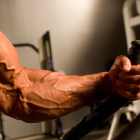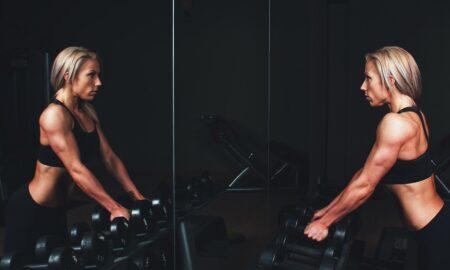 Q: The pros seem to have fantastic forearms, yet rarely do I read about them doing specialized forearm work. Why is that?
Q: The pros seem to have fantastic forearms, yet rarely do I read about them doing specialized forearm work. Why is that?
A: Some people have terrific forearm development even if they aren’t bodybuilders. Check out naturally stocky men with thick bone structures who do manual work for a living, and you’ll likely find some forearms that most bodybuilders would be proud of. The manual work developed the above-average muscle-building potential in their forearms.
So the starting point for having terrific forearms is heredity. If you have long forearm bones and short forearm muscle bellies, relatively speaking, you’ll have less muscle-girth potential than someone who has shorter forearm bones and longer muscle bellies. Long muscle bellies are the ideal for bodybuilding throughout the body.
The professional bodybuilders have fantastic genetics for bodybuilding throughout their physiques—including long muscle bellies. Of course, some of them have more fantastic genetics than others, and some have bodyparts that are not quite as freaky, relatively speaking, as the rest of their physiques. Even without doing any isolation exercise for their lower arms, they developed their forearms by doing deadlifts, shrugs, rows, pulldowns and chins—if they weren’t using straps or hooks to assist their grip. Still, they’d bring up their forearms and improve their grip if they gave the forearms some specialized work.
Bodybuilders often do wrist curls and reverse wrist curls to work the wrist flexors and wrist extensors, respectively, the muscles that comprise the bulk of the forearm. Still, I’ve not heard of any pro bodybuilders doing isolation finger flexion and extension. Even if they did, I doubt it would add any visible muscle, but it would strengthen the finger muscles.
The large bones of the forearm are the ulna and the radius, which run from the elbow to the wrist. The arm muscles that flex the forearm bones are the biceps (or biceps brachii), the brachialis (beneath the biceps) and the brachioradialis (which joins the upper-arm bone to the wrist). The brachioradialis is more a part of the forearm musculature than the upper-arm. The arm muscles that extend the forearm bones are the triceps (or triceps brachii), and the anconeus (a small muscle close to the elbow).
The muscles of the forearm move the wrist and the fingers. For a relatively small area of musculature, it’s complex, with many small inter-related muscles. The palm side has eight muscles spread over three layers, most of which are involved in flexing the wrist and fingers. The back side has 10 muscles spread over two layers, which are involved in extending the wrist and fingers.
All curls involve flexion of the arm musculature and perhaps some flexion of the wrist. Curls also require flexion of the finger muscles; otherwise, the weights would fall from your hands. Your fingers must squeeze to hold the resistance in place.
Different curls apply the flexion differently. Hammer curls, where the palms remain facing each other, don’t involve the supination that regular barbell curls do, while fully supinated dumbbell curls yield the greatest degree. Although the brachialis and brachioradialis flex the forearm bones only, the biceps flexes the forearm bones and supinates the hand. So hammer curls don’t involve the biceps to the extent that most other curls do, and so they affect the forearm musculature somewhat differently than other curls do because of the thumbs-up grip.
There’s some hair splitting when it comes to the supposed different effects of different curls on the arm and forearm musculature. Much more important than the precise differences between curl variations is finding one that involves full supination, using correct exercise technique, training hard and becoming much stronger. That, for most bodybuilders—hardgainers—is what will build bigger arms and forearms provided you combine it with the proper focus on overall bodybuilding. And assuming that you work hard enough on the supinated-grip chinup, you may be able to build bigger arm flexors without doing any isolation work whatsoever.
For hardgainers, unless you get your physique growing as a whole, you’re unlikely to be able to build any muscle of substance on your arms. Rather than give undue attention to curls, give almost all of your attention in the gym to building 25 percent greater strength on your five- or six-rep squat, bench press, deadlift, seated overhead press and chinup (or pulldown or chest-supported row)—in perfect exercise form, of course. Invest the time and dedication in achieving that, and you should see a very noticeable increase in muscle size throughout your physique, including your arms.
—Stuart McRobert
www.Hardgainer.com
Editor’s note: Stuart McRobert’s first byline in IRON MAN appeared in 1981. He’s the author of the new BRAWN series, Book 1: How to Build Up to 50 Pounds of Muscle the Natural Way, available from Home Gym Warehouse, (800) 447-0008 or www.Home-Gym.com.




















You must be logged in to post a comment Login